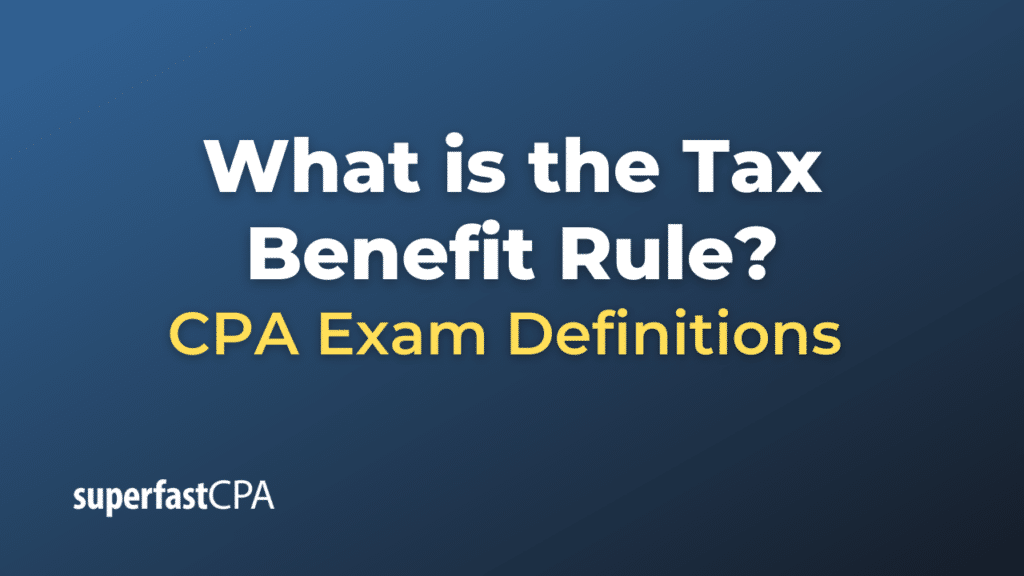Tax Benefit Rule
The Tax Benefit Rule is a tax principle in the U.S. tax code that addresses the treatment of tax deductions that are recovered in a subsequent year. The rule ensures that taxpayers don’t receive a double benefit from both a deduction and later recovery of the same amount.
Here’s the essence of the rule: If a taxpayer takes a deduction in one year that reduces their taxable income, and in a later year recovers all or part of that previously deducted amount (for example, due to a refund or reimbursement), the recovered amount must be reported as income in the year of the recovery, but only up to the extent that the prior deduction provided a tax benefit.
Example of the Tax Benefit Rule
Let’s illustrate the Tax Benefit Rule with a detailed example:
Scenario:
In 2021, Sarah, a freelance graphic designer, faced a significant business loss due to some bad client deals. She had paid $20,000 in office rent that year. Due to her financial hardships, she deducted this entire amount as a business expense on her tax return, which helped reduce her taxable income for 2021.
By mid-2022, Sarah’s landlord felt sympathetic towards her and decided to refund half of the previous year’s rent ($10,000) as a goodwill gesture, given her financial challenges.
Application of the Tax Benefit Rule:
For 2021, Sarah received a tax benefit from deducting the $20,000 rent as it reduced her taxable income. But when she got the $10,000 refund in 2022, she effectively recovered an expense she had previously deducted.
Here’s how the Tax Benefit Rule comes into play:
- Initial Deduction in 2021: Sarah deducted the full rent of $20,000 from her income, which reduced her taxable income for that year.
- Recovery in 2022: Sarah receives a $10,000 refund from her landlord.
- Tax Benefit Rule Application : In her 2022 tax return, Sarah would need to report the $10,000 refund as income. This is because she had received a tax benefit from that amount in 2021 when she deducted it as a business expense. If she’s in a 25% tax bracket, this means she’ll owe an additional $2,500 in taxes for 2022 on the refunded amount.
In essence, the Tax Benefit Rule ensures that Sarah doesn’t double-dip by both deducting the rent in 2021 and then keeping the refunded amount in 2022 tax-free. She needs to pay taxes on the recovered amount to the extent she benefited from the deduction in the previous year.













